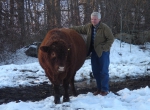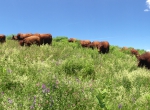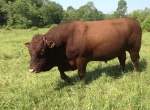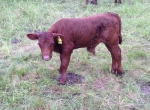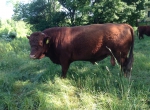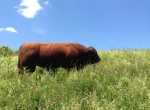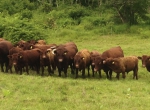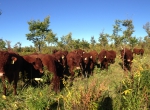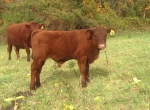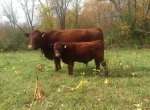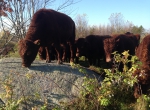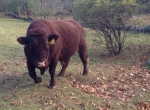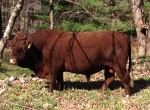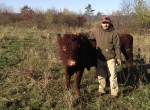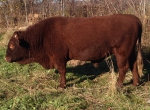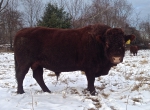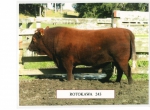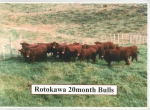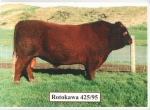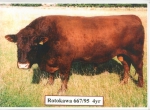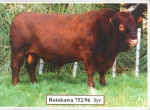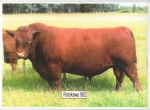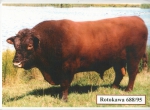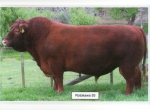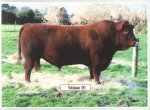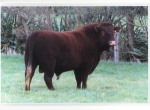What Are Spider Graphs? Breeding is the art of making pairs, that is, combining complementary traits. Breeders can use our spider graphs to identify weak traits in individual animals and correspondingly strong points in potential mates, to create offspring with a perfected body conformation. Basically we take key measurements of the animal’s body, and compare certain measurements to other measurements on the same animal in order to determine key ratios. Then we represent those ratios in a visual layout that makes the animal’s breeding potential clear at a glance. The basic linear measurement approach has been used for centuries to evaluate cattle, but in utilizing and refining it, I have drawn on work done over a period of years by Jan Bonsma, Burl Winchester, Karney Redman and others. Bonsma understood the significance of measurement and wrote about it in Man Must Measure, Livestock Production, 1983, but the task of distilling Bonsma’s ideas into a system fell to Winchester and Redman, who wrote a pamphlet titled Why Measure? in 1988. In recent years, Gearld Fry has popularized this approach, and it was Gearld who introduced me to the importance of linear measurement. Since then I have verified the validity and significance of this system, not only through my field experience throughout North America, New Zealand, Argentina, Uruguay, England, and France, but also through my experience in marketing meat to stores and restaurants throughout the Northeast. The measurements used for the ratios in the Rotokawa Spider Graphs are rump length, two thirds body length, total top line, heart girth, flank girth, shoulder width, rump width and hip height. From these eight measurements we determine five key ratios that reveal balance and structural correctness for grass production. Structural correctness indicates durability and longevity. Animals that are long lived and will breed back consistently for many years are critical for financial success. Also, the ratios allow us to predict volumes of meat. Animals that exceed the excellence standard indicated on the graph will have a higher percent of meat in the high value areas of the animal: the loin and rib areas. How to Use the Graphs What follows is a description of the graphs, how they are plotted, and how the breeder can use them. This method will indicate the general potential of a particular animal to thrive in a 100% grassfed program, and identify areas of weakness or strength: 1) Heart girth indicates the heart girth compared to top line. The heart girth should be at least equal to the top line,and every inch of heart girth that is greater than the top line adds 37 pounds of red meat to the high value areas of the animal. Adding heart girth to your meat animals is the easiest way to increase the value of the carcass and earn more money per animal in your herd. The �0� on the spider graph is set at equal; “0” indicates that the heart girth equals the top line. 2) Shoulder width is the comparison of the rump length (not the rump width) totheshoulderwidth. Therumplengthis the measurement from the hooks to the pins,and when compared tothe shoulder widthis indicative ofmasculinityand the presence of testosterone. The male is all about the shoulders. (The female is all about the rump.) The bull should have shoulders at least 2″ widerthan therump length as a young bull, and a mature bull should have shoulders at least 4″ wider than the rump length. The “0” on the spider graph is set at +2″, the minimum for a good bull. 3)Rump width % is the comparison of the hip height of the bull to the rump width. A higher percentage is indicative of volume of meat in the rump area. We expect the bull to be 44% as wide as he is tall. Wider is better. The “0” on the spider graph is set at 44%. 4) Flank girth is a comparison of the flank girth to the heart girth. On a bull, we would like to see these numbers be equal. An “0” on the spider graph indicates that the flank girth equals the heart girth. Equal is the ideal, but bulls will be greater or less in this measurement. 5) Rump length % is the comparison of the rump length to the two-thirds body length of the bull. This two-thirds length is measured from the rear of the animal to the point on the back bone directly above the point of the shoulder. The “0” in the spider graph is set at 37%. Remember all animals have strong points and weak points. Each spider graph shows an excellent standard compared to ratios of a particular animal that may fall short of the standard or may exceed it. These graphs will help producers make more informed choices on breeding. All of our the Rotokawa® bulls are “prepotent,” that is, they have the “bull power” to impact their offspring in a consistent way, but they do have different strengths. You can see from the spider graphs which ones are stronger in the heart girth, rump width percent, and in the shoulder measurements. In summary our Rotokawa spider graphs provide specific criteria for breeding decisions that can be documented and communicated to others.
Calves from Rotokawa sires are stunningly similar to one another. They were bred for prepotency and the ability of the bulls to consistently stamp their progeny with their traits. The quality of this subset of the Devon Breed is reflected even in the half-blood stock produced by AI.
Through artificial insemination (AI), Rotokawa bulls have bred cattle across the U.S and Canada and indeed, across the world, with many progeny in England, Brazil and Australia.
View our list of bulls for sale (PDF file)Semen Bulls
Rotokawa Devon 343
Rotokawa 343 is a son of Rotokawa 93 and is very similar to 93 in phenotype. He is quite thick in the rump and packs quite a bit of beef on his moderately tall carcass. This young bull shows a lot of promise and will be retained for breeding in the Rotokawa herd.View pedigree. |
|
Rotokawa Devon 344
Rotokawa 344 is a son of Rotokawa 93 and is a big thick bull. His dam is one of the grand old ladies imported fromNew Zealand, Rotokawa 13. She is 11 years old and still producing great calves. 344 will make a great terminal sire for crossbreeding to your commercial cows to produce high volumes ofmeat in the high value areas of the carcass.View pedigree. |
|
|
Rotokawa 346 is a son of Rotokawa 982 and carries on this family line in the Rotokawa herd. His first crop of calves will be born in the spring of 2011 and we can’t wait. He is a bull that looked like a herd sire the day he was born in quarantine right after the Rotokawa herd arrived in the US. His dam is Rotokawa 105 and is a moderate functional cow. 346 is thick in the front end like his sire and will add the 982 family genes to your breeding program. View pedigree. |
|
Rotokawa Devon 349/08
Rotokawa 349 is a son of Rotokawa 29 who is a son of one of the great Rotokawa legacy bulls, Rotokawa 667. This sire is famed for his ability to put a great udder on all female calves he sires. 349 has the traits of his grandfather and we look forward to his first crop of calves with great anticipation. This is the bull to use to introduce genes from the Rotokawa 667 family to your herd. He will also make a great terminal sire for your meat production program. View pedigree. |
Lineage Archives: Past Greats
Grand Sire and Great Grand sires of the Rotokawa family
Semen no longer available
Rotokawa Devon 243 AKA Rangatera
Rotokawa 243 AKA Rangatera is a son of Rotokawa 93 out of the great Rotokawa cow 592. View this bull’s pedigree (PDF) |
|
Rotokawa Devon 974
Bull 974 is the son of 667 who in turn was the son of the great Rotokawa 425. Bull 974 was the top bull in the Breed Plan measure of bulls in 2006. This frame 3 bull will add volume of meat to your calves and will put a rump on them. Bull 974 is no longer alive and therefore if you have plans to use this bull you should purchase and put aside some semen for the future. View this bull’s pedigree. |
|
Rotokawa Devon 667
Bull 667 is the son of Rotokawa 425, the bull that had a huge impact in England when he was introduced there. He ranked number 2 in the Breed Plan rankings in 2006. Bull 667 has a tremendous rump width percent and will add volume to any calves he sires. Bull 667 has a very positive impact on any cows with a questionable udder; we have seen him straighten out an udder in one generation. This is bull power. Bull 667 is no longer alive and supplies of semen are limited. View pedigree. |
|
Rotokawa Devon 663
Rotokawa 663 is one of the senior sires from the Rotokawa herd. He died before we linear measured the herd. We have run out of semen from this bull. View pedigree. |
|
Rotokawa Devon 982
|
|
 Rotokawa Devon 688 Rotokawa Devon 688
|

